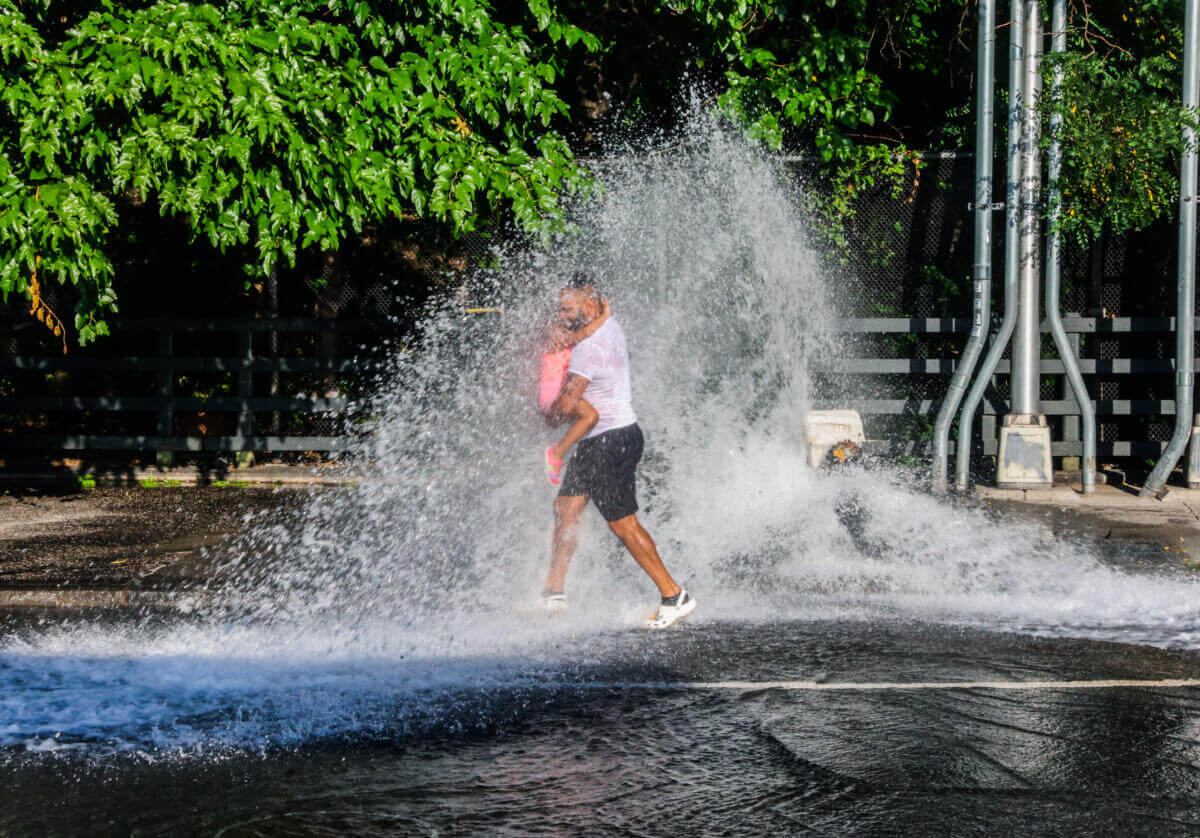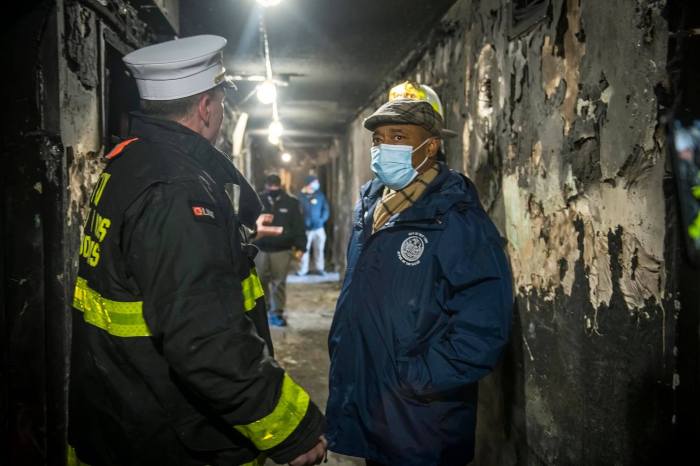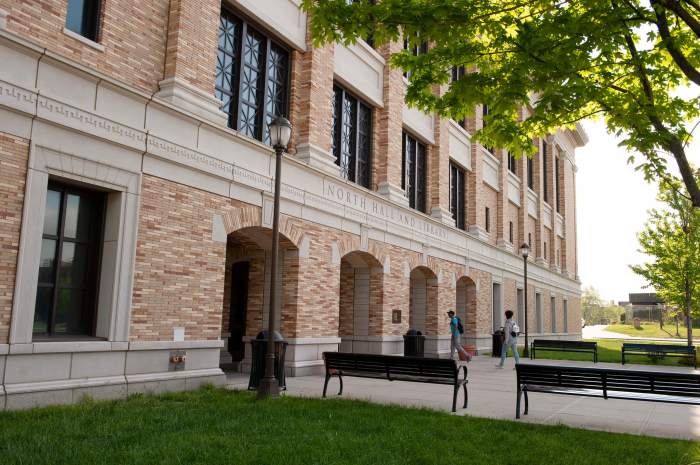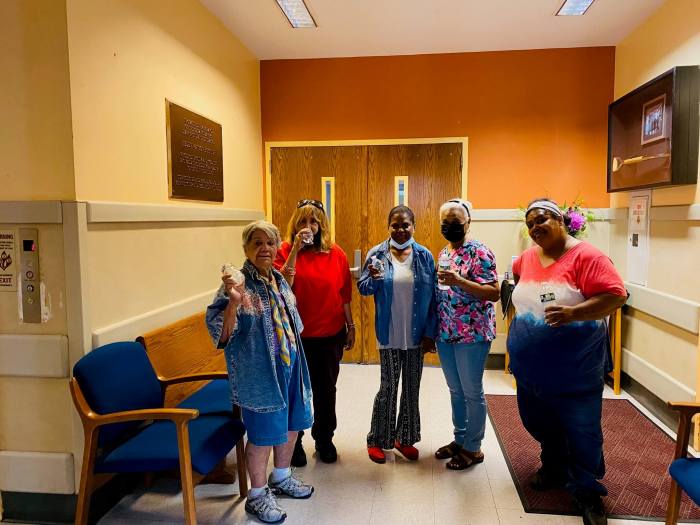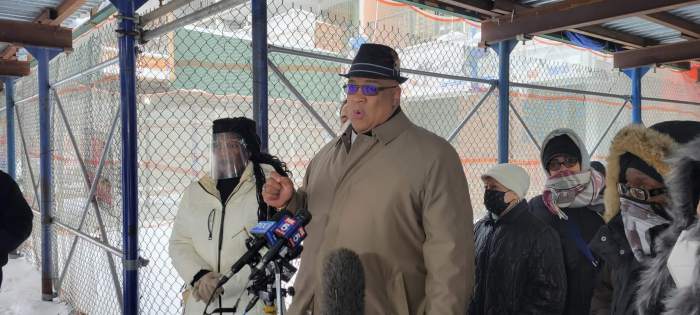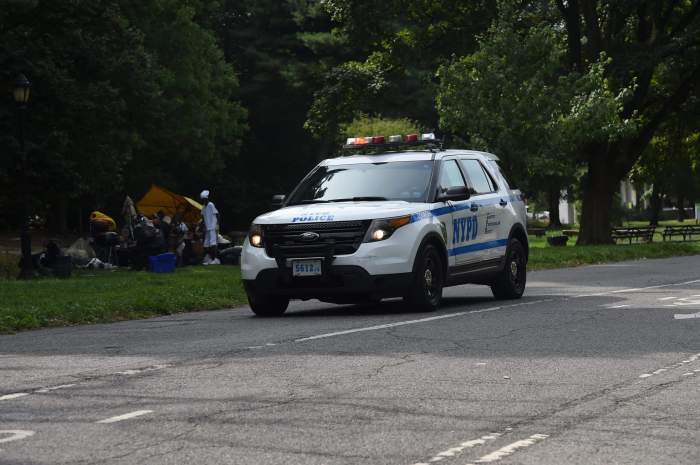New Yorkers are advised to take precaution over the next few days after officials issued a heat advisory on Thursday, and some Bronx residents and neighborhoods continue to be particularly vulnerable to rising temperatures.
The National Weather Service issued a heat advisory for New York City from Thursday through Saturday, where temperatures are supposed to reach as high as about 108 degrees on Friday. At about 2 p.m. on Thursday, Yankee Stadium had already clocked in at 92 degrees with a “RealFeal” temperature of 104, according to AccuWeather.
“As we brace for a week of heightened heat, we are witnessing what is fast becoming our new normal — a direct repercussion of climate change,” said NYC Emergency Management Commissioner Zach Iscol. “It’s crucial to remember that combating climate change demands both large-scale action and individual preparedness.”
This preparedness is especially crucial in the Bronx, where neighborhoods are more susceptible to negative heat-related impacts than many others across New York City.
According to information from the city environment and health data portal, the vast majority of Bronx neighborhoods are dubbed “highest risk” on scale of 1 to 5 on the heat vulnerability index — which takes into account temperature, access to air conditioning, amount of green space and the percentage of residents who are low income or non-Latinx Black. The Bronx has 22 high-risk neighborhoods — compared to 11 in Brooklyn, seven in Queens, three in Manhattan and zero on Staten Island.
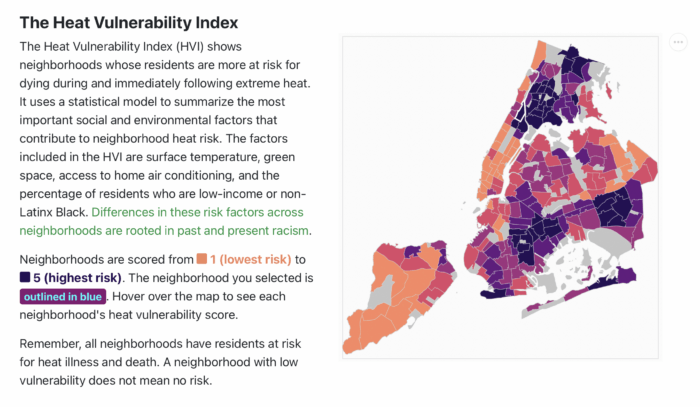
In Bronx Community District 7 — which encompasses some of the highest risk neighborhoods, including Fordham and University Heights — green space as a means of heat mitigation and environmental sustainability was actually a topic of conversation at a recent meeting.
Emily Maxwell — the New York Cities director at the national nonprofit Nature Conservancy — said during the Community Board 7 Parks, Recreation and Cultural Affairs Committee meeting on April 12 that the district was on the “middle to lower end” of canopy coverage, and that the South Bronx has the overall lowest. Maxwell said the organization’s goal is to reach 30% urban canopy cover across New York City by 2035.
The heat advisory comes almost exactly one year to date from another equally intense wave of high temperatures. This time last year New Yorkers were coming off a weeklong swell of 90-degree days, and the medical examiner’s office announced one heat-related death. According to the data portal, approximately 350 New Yorkers die prematurely due to hot weather each summer.
“Heat is deadly, and climate change is making extreme heat more frequent and even more dangerous, especially for vulnerable New Yorkers, so it is absolutely critical that we take care of ourselves and each other,” said city Health Commissioner Dr. Ashwin Vasan.
The city encourages New Yorkers to limit outdoor activities, stay hydrated, wear light clothing, eat small frequent meals, walk pets and use big appliances in the cooler parts of the day, keep blinds and curtains closed, and to use air conditioners and fans if possible to stay cool.
The city also has sprinkler spray showers in multiple public parks for all ages. To find sprinklers — as well as places with drinking fountains, pools and tree canopy — visit the “Cool It! NYC” website on the Department of Parks and Recreation website. Residents may also go to their local firehouse and request a spray cap to put on a nearby fire hydrant.
Cooling centers will also be open across all five boroughs through Saturday, according to NYC Emergency Management, which will be particularly vital for homeless New Yorkers. The city’s Department of Homeless Services issued a code red alert Thursday, which prompted enhanced outreach efforts to help clients access cooling centers. To find one, visit the online finder or call 311.
If anyone is showing signs of heat illness or exhaustion — which includes hot or dry skin, trouble breathing, rapid heartbeat, disorientation, nausea and vomiting — call 911.
Reach Camille Botello at cbotello@schnepsmedia.com. For more coverage, follow us on Twitter, Facebook and Instagram @bronxtimes

